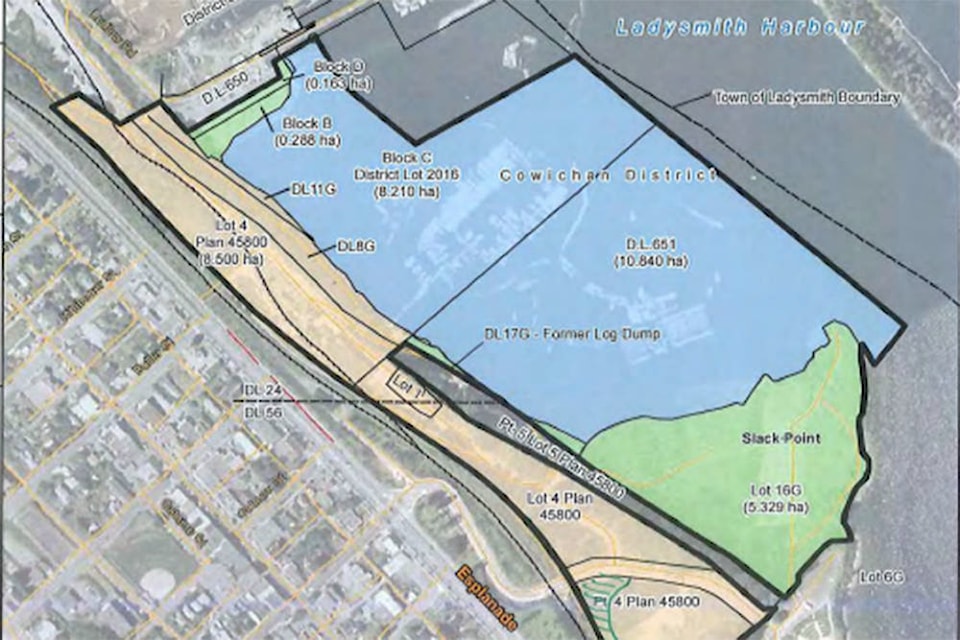Council voted to hire a ‘qualified environmental engineering firm’ to complete an environmental study of the Town owned, ‘uplands area’ on the Ladysmith waterfront, at the May 19 Special Council Meeting.
The uplands area is defined as the Town-owned land from the foreshore up to the E&N rail line, and from Captain Tristan de Koninck Way to 940 Oyster Bay Dr. The budgeted costs for the study are approximately $400,000, with funds coming from general surplus and development reserves. Funds will not be coming from the 2020 Budget.
The Town has submitted a funding application from the Federation of Canadian Municipalities, (FCM) to recoup some of the costs of the work. Under the FCM site remediation and risk management study program, municipalities can be reimbursed for 50 percent of the costs for site investigation studies up to $175,000.
A detailed site investigation of the uplands area is required because of contaminants in the area that require remediation. In 2012, the Town released a report by Golder Associates that outlines the environmental conditions of the Ladysmith Harbour, the extent of contamination, and range of costs for alternatives to address remediation.
RELATED: Ladysmith draft waterfront plan addresses contamination, includes a few surprises
Four areas within the uplands area have been designated as areas of environmental concern, (AEC), and three have been designated as areas of potential environmental concern (APEC).
Contaminants in the area are from several sites with historical industrial uses that include former fuel pump islands, boat maintenance areas, former waste oil storage, a rail yard, areas that stored ‘fill of unknown quality’, and a former log dump.
Some of the contaminants present include BTEX, a mixture of benzene, toluene, ethylbenzene and xylene; volatile petroleum hydrocarbons (VPH); heavy metals; and other hydrocarbons like naphthalene, and polycyclic aromatic hydrocarbons, (PAH). ‘Special Attention Items’ like asbestos, lead, and polychlorinated biphenyls were also identified in the area.
“These Special Attention Items are not considered to represent an issue of potential environmental concern provided they are managed in accordance with applicable environmental, health, and safety legislation,” the Golder Report states.
Part of that management requires a detailed site investigation. The Town has done some detailed site investigation work in the past, including studies that date back to the 1980s. Due to changes in provincial standards on site contamination, an updated investigation is required. The new investigation will meet updated provincial standards, and show whether site contamination has changed over time.
Once the detailed site investigation is completed, the Town can implement a formal remediation plan, and commence the provincial approval process. All remediation options require provincial approval. Approval decisions are based on information gathered in the detailed site investigation stage. Once the contaminants are remediated, the land can be sold and developed.
The Golder Report estimated preliminary remediation costs at $480,000 - $700,000, excluding taxes and applicable provincial fees. The environmental study accounts for $400,000 of that total.
The Town expects to recover the costs of remediation through the eventual sale and development lands as outlined in the Waterfront Area Plan.
